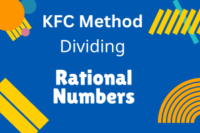Chemistry Class 10 Chapter 5
Published: 14 Dec 2023
Chemistry Class 10 Chapter 5 introduces the concept of “Biochemistry”. This is mainly chapter No. 13, “Biochemistry”, of the book of Class 10.
This article consists of Notes, SLO Based Notes and MCQs of chemistry, which cover your course, board papers and clear your chemistry concept for different types of tests.
Chemistry Class 10 Chapter 5 Notes
Biochemistry
SLO Base Questions
Chemistry Class 10 Chapter 4 MCQs
1. ____________is the study of organic compounds and reactions that occur in living organisms.(a) Biochemistry
(b) Environmental chemistry
(c) Nuclear Chemistry
(d) None of these
Show Answer
Biochemistry
2. The bodies of living things are made of chemical ______________.
(a) Isotopes
(b) elements
(c) Radicals
(d) None of these
Show Answer
elements
3. The most common elements in living organisms are carbon, hydrogen, nitrogen and ______________.
(a) Oxygen
(b) Phosphorus
(c) Sulpher
(d) All of these
Show Answer
All of these
4. The chemical analysis of ___________shows that it is composed of two types of compound i.e. organic & inorganic.
(a) Protoplasm
(b) Amoeba
(c) Golgi bodies
(d) Micro organisms
Show Answer
Protoplasm
5. The biological organic compound consists of carbohydrates, proteins and _______________.
(a) Lipids
(b) Nucleic acid
(c) Vitamins
(d) All of these
Show Answer
All of these
To Download Complete Notes of Chemistry Notes 10 Class, Click on the given link.
6. Carbohydrates are ____________compound composed of carbon, hydrogen and oxygen.(a) Inorganic
(b) organic
(c) Both
(d) None
Show Answer
organic
7. The ratio of carbon, hydrogen and oxygen in carbohydrates is ________________.
(a) $ 1: 2: 1 $
(b) $ 2: 1: 1 $
(c) $ 1: 1: 2 $
(d) $ 1: 1: 3 $
Show Answer
$ 1: 2: 1 $
8. Sometimes carbohydrates also contain __________________.
(a) Nitrogen
(b) Sulpher
(c) Sodium
(d) Both (a) and (b)
Show Answer
Both (a) and (b)
9. Nitrogen is present in ___________.
(a) Chitin
(b) Keratin
(c) Starch
(d) None of these
Show Answer
Chitin
10. Sulpher is present in ____________________.
(a) Chitin
(b) Keratin
(c) Starch
(d) None of these
Show Answer
Keratin
11. Glucose is present in _________________.
(a) Grape sugar
(b) Potato
(c) Honey
(d) All of these
Show Answer
Grape sugar
12. Fructose is present in ___________________.
(a) Grape sugar
(b) Potato
(c) Honey
(d) None of these
Show Answer
Honey
13. ___________is present in sugar cane.
(a) Glucose
(b) Sucrose
(c) Starch
(d) None of these
Show Answer
Sucrose
14. Starch is present in ____________________.
(a) Potatoes
(b) Wheat
(c) Oats
(d) None of these
Show Answer
Potatoes
15. Cellulose is present in _________________.
(a) Potatoes
(b) Wood
(c) Biscuit
(d) None of these
Show Answer
Wood
16. Carbohydrates have the general formula of _______________.
(a) $ C_n(H_2O)_n $
(b) $ C_nH_{2n} $
(c) $ C_nH_{2n-2} $
(d) None of these
Show Answer
$ C_n(H_2O)_n $
17. According to modern definition, carbohydrates are _______of polyhydroxyaldehydes or Ketones.
(a) Micromolecules
(b) Intermediate
(c) Macromolecules
(d) None of these
Show Answer
Macromolecules
18. Carbohydrates are usually referred as ________________.
(a) saccharide
(b) Alloys
(c) Saturated solution
(d) None of these
Show Answer
saccharide
19. Saccharide is derived from a Latin word “saccharum” which means.__________.
(a) Salt
(b) sugar
(c) Fog
(d) Grean
Show Answer
sugar
20. Carbohydrates are divided into _______main class .
(a) One
(b) Two
(c) three
(d) Four
Show Answer
three
21. __________is the simplest sugar and the most basic unit of carbohydrates.
(a) Monosaccharide
(b) Oligosaccharide
(c) Poly saccharide
(d) None of these
Show Answer
Monosaccharide
22. Monosaccharides ________further hydrolyzed into simple sugar.
(a) Can be
(b) May be
(c) Cannot be
(d) None of these
Show Answer
Cannot be
23. The general formula of monosacharides are __________________.
(a) $ C_nH_{2n} $
(b) $ C_n(H_2O)_n $
(c) $ C_nH_{2n-2} $
(d) None of these
Show Answer
$ C_n(H_2O)_n $
24. A monosaccharide consist of ___________carbon atoms.
(a) $ 3-9 $
(b) $ 1-9 $
(c) $ 1-3 $
(d) $ 1-6 $
Show Answer
$ 3-9 $
25. _________is a monosaccharide consist of three carbon atom.
(a) triose
(b) Tetrose
(c) Pentose
(d) Hexose
Show Answer
triose
26. A monosaccharide consist of $ 4 $ carbon atom are called_____________.
(a) Triose
(b) Tetrose
(c) Pentose
(d) hexose
Show Answer
Tetrose
27. A monosaccharide consist of $ 5 $ carbon atoms are called________.
(a) Triose
(b) Tetrose
(c) Pentose
(d) Hexose
Show Answer
Pentose
28. A monosaccharide consist of $ 6 $ carbon atoms are called _______.
(a) Triose
(b) Tetrose
(c) Pentose
(d) Hexose
Show Answer
Hexose
29. The most important manosaccharides are__________________.
(a) Glucose
(b) Fructose
(c) Starch
(d) Both (a) and (b)
Show Answer
Both (a) and (b)
30. The glucose and fructose are hexoses and have the same molecular fomula___________.
(a) $ C_6H_{12}O_6 $
(b) $ C_5H_{10}O_5 $
(c) $ C_4H_8O_4 $
(d) $ C_3H_6O_3 $
Show Answer
$ C_6H_{12}O_6 $
31. Glucose is a pentahydroxy______________.
(a) Ketone
(b) aldehyde
(c) Carboxyl
(d) Alcohol
Show Answer
aldehyde
32. Fructose is a pentahydroxy_________________.
(a) Ketone
(b) Aldehyde
(c) Carboxyl
(d) Alcohol
Show Answer
Ketone
33. Monosaccharide molecules can rotate the plane polarized light to ___________.
(a) Upside down
(b) Clockwise
(c) Anticlock wise
(d) None of these
Show Answer
Clockwise
34. Monosaccharides are _________in nature.
(a) Reducing
(b) Oxidizing
(c) delocalizing
(d) None of these
Show Answer
Reducing
35. Most monosaccharides have a __________taste.
(a) Sour
(b) sweet
(c) Bitter
(d) None of these
Show Answer
sweet
36. Which of the following is the sweetest carbohydrate?
(a) Fructose
(b) Starch
(c) Glucose
(d) Cellulose
Show Answer
Fructose
37. Monosaccharides are usually colourless _______solids at room temperature.
(a) Anorphous
(b) Crystalline
(c) None
(d) All of these
Show Answer
Crystalline
38. Monosaccharides are completely __________in water.
(a) Semi soluble
(b) Unsoluble
(c) soluble
(d) None of these
Show Answer
soluble
39. Carbohydrates which on hydrolysis give 2 to 9 molecules of monosaccharides are called ___________.
(a) Monosaccharide
(b) Oligosaccharide
(c) Polysaccharide
(d) None of these
Show Answer
Oligosaccharide
40 The type of oligosaccharides are called_______________.
(a) Disaccharide
(b) Trisaccharide
(c) Tetrasaccharide
(d) None of these
Show Answer
Disaccharide
41. The type of oligosaccharide which contain three 3 monosaccharide unit are called.__________.
(a) Disaccharide
(b) trisaccharide
(c) Tetrasaccharide
(d) None of these
Show Answer
trisaccharide
42. The type of oligosaccharide that contain five(5) simple sugars are called_______________.
(a) Pentasaccharide
(b) Hexasaccharide
(c) Heptasaccharide
(d) None of these
Show Answer
Pentasaccharide
43. Oligosaccharides are _________in taste.
(a) sweet
(b) Bitter
(c) Sour
(d) None of these
Show Answer
sweet
44. Oligosaccharides are white crystalline _______that are easily soluble in water.
(a) Gases
(b) Liquids
(c) solid
(d) None of these
Show Answer
solid
45. The most important member of oligosaccharides is ________________.
(a) Pentasaccharide
(b) disaccharide
(c) Heptasaccharide
(d) None of these
Show Answer
disaccharide
46. Sucrose on hydrolysis produces two molecules i.e glucose and _____________.
(a) Fructose
(b) Galoctose
(c) Glucose
(d) None of these
Show Answer
Fructose
47. Lactose on hydrolysis gives two molecules i.e glucose and _____________.
(a) Fructose
(b) Galactose
(c) Glucose
(d) None of these
Show Answer
Galactose
48. Maltose on hydrolysis gives two molecules i.e glucose and ____________.
(a) Fructose
(b) Galactose
(c) Glucose
(d) None of these
Show Answer
Glucose
49. The molecular formula of sucrose is _________________.
(a) $ C_{12}H_{22}O_{11} $
(b) $ C_{12}H_{22}O_{12} $
(c) $ C_{12}H_{20}O_{11} $
(d) None of these
Show Answer
$ C_{12}H_{22}O_{11} $
50. A ________linkage is the link or bond between the rings in an oligosaccharide or polysaccharide.
(a) Peptide
(b) Glycosidic
(c) Covalent
(d) None of these
Show Answer
Glycosidic
51. Carbohydrates which consist of long chains of monosaccharide units bond together by glycosidic linkages are called ________________.
(a) Polysacharide
(b) Oligosaccharide
(c) Monosaccharide
(d) None of these
Show Answer
Polysacharide
52. Polysaccharides are also known as ___________________.
(a) Micromolecules
(b) macromolecules
(c) Both
(d) None of these
Show Answer
macromolecules
53. Starch, glycogen and cellulose are the examples of _____________.
(a) Monosaccharide
(b) Oligosaccharide
(c) polysaccharide
(d) None of these
Show Answer
polysaccharide
54. Polysaccharides are ______________solids.
(a) Amorphous
(b) Crystalline
(c) Metallic
(d) None of these
Show Answer
Amorphous
55. They are tasteless and _________in water.
(a) Soluble
(b) Semi-soluble
(c) Insoluble
(d) None of these
Show Answer
Insoluble
56. Polysaccharides are also called_________________.
(a) Sugar
(b) Non-sugar
(c) Salts
(d) None of these
Show Answer
Non-sugar
57. Polysaccharides have high molecular mass and consist of _________monosaccharide units joined together by glycosidic linkages.
(a) 1 or more
(b) 9 or more
(c) 100 or more
(d) None of these
Show Answer
100 or more
58. Carbohydrates are the most abundant class of ________containing compounds.
(a) $ C, H, O $
(b) $ C, N, S $
(c) $ C, K, Si $
(d) None of these
Show Answer
$ C, H, O $
59. The sources of monosaccharaides are _______________.
(a) Fruits
(b) Vegetables
(c) Cereal
(d) All of these
Show Answer
All of these
60 Sucrose, lactose and maltose are the sources of sugarcane, fruits, milk and cereals. They are __________.
(a) disaccharides
(b) Trisaccharides
(c) Tetrasaccharides
(d) None of these
Show Answer
disaccharides
61 Cotton is the main example of ___________________.
(a) Starch
(b) Glycogen
(c) cellulose
(d) None of these
Show Answer
cellulose
62. ____________is found in potatoes, wheat, rice, barley etc.
(a) Starch
(b) Glycogen
(c) Cellulose
(d) None of these
Show Answer
Starch
63. Carbohydrates are used by our body as a rich source of ________________.
(a) Strength
(b) energy
(c) Heat
(d) Eat
Show Answer
energy
64. Sugar is used as a common ___________for food.
(a) Sweetener
(b) Catalyst
(c) Reagent
(d) None of these
Show Answer
Sweetener
65. Cellulose helps in lowering cholesterol and regulates_____________.
(a) Heart rate
(b) Blood pressure
(c) Pulse rate
(d) None of these
Show Answer
Blood pressure
66. ____________is used in cotton industry for making clothes.
(a) Cellulose
(b) Starch
(c) Fructose
(d) None of these
Show Answer
Cellulose
67. Constipation and diarrhea are mainly controlled by fibres which are _____________.
(a) Proteins
(b) Vitamins
(c) Carbohydrates
(d) None of these
Show Answer
Carbohydrates
68. The name protein is derived from a ________word “proteios” which means “of prime importance”.
(a) Greek
(b) Persian
(c) Latin
(d) None of these
Show Answer
Greek
69. Proteins are the biopolymers of ___________.
(a) Monosaccharides
(b) Amino acids
(c) Nucleaticles
(d) None of these
Show Answer
Amino acids
70. The highly complex nitrogenous substances that are made up of amino acids present in all living organisms are called_____________.
(a) Proteins
(b) Vitamins
(c) Nucleic acids
(d) None of these
Show Answer
Proteins
71. Proteins are the major component of ________and essential for growth and maintenance of life.
(a) Tissues
(b) Chromosomes
(c) Cell
(d) None of these
Show Answer
Cell
72. About ______of the dry weight of the cell is made up of proteins.
(a) 10 — 40 %
(b) 50 – 55 %
(c) 70 — 90 %
(d) 80 – 100 %
Show Answer
50 – 55 %
73. ________are the building blocks of proteins .
(a) Amino Acid
(b) Simple sugar
(c) Nucleotides
(d) None of these
Show Answer
Amino Acid
74. Amino acids joined together by ________linkage to form high molecular mass polymers.
(a) Glycosidic
(b) Nuleophilic
(c) Peptide
(d) None of these
Show Answer
Peptide
75. Protein produces aminoacids on ___________.
(a) Oxidation
(b) hydrolysis
(c) Reduction
(d) None of these
Show Answer
hydrolysis
76. The examples of proteins are ____________.
(a) Keratin
(b) Albumin
(c) Legumin
(d) All of these
Show Answer
All of these
77. All proteins contain _________essential elements.
(a) 4
(b) 8
(c) 3
(d) 7
Show Answer
4
78. The four essential elements of _________are carbon, hydrogen, oxygen and nitrogen.
(a) Carbohydrates
(b) proteins
(c) Lipids
(d) None of these
Show Answer
proteins
79. Most proteins also contain some___________.
(a) Sulphur
(b) Argon
(c) Sodium
(d) None of these
Show Answer
Sulphur
80. Amino acids are organic compounds consisting ________groups.
(a) Amino $ (NH_2) $
(b) Carboxyl $ (COOH) $
(c) Alkyl
(d) All of these
Show Answer
All of these
81. There are _______different types of amino acids that are involved in protein synthesis.
(a) 50
(b) 40
(c) 30
(d) 20
Show Answer
20
82. Our body can prepare _________ amino acids which are called non-essential amino acids.
(a) 5
(b) 8
(c) 10
(d) 14
Show Answer
10
83. Our body cannot prepare ten amino acids which are called _______amino acids.
(a) Essential
(b) Non-essential
(c) None
(d) All of these
Show Answer
Essential
84. The linkage which joins carboxyl carbon of one amino acid with an amino group of another aminoacid, forming the sequence CONH, is called ________linkage.
(a) Glycosidic
(b) Peptide
(c) Dative
(d) None of these
Show Answer
Peptide
85. In protein molecules, __________ types of bonding may occur.
(a) One
(b) Two
(c) Three
(d) None of these
Show Answer
Three
86. The various amino acids differ in _______groups.
(a) Alkyl
(b) Alcohol
(c) Carboxyl
(d) None of these
Show Answer
Alkyl
87. Proteins molecules can be ____________.
(a) Fibrous
(b) Globular
(c) Both (a) and (b)
(d) None of these
Show Answer
Both (a) and (b)
88. Fish, meat, eggs, milk, cheese etc are the _______source of proteins.
(a) Plants
(b) animal
(c) None
(d) All of these
Show Answer
animal
89. Pulses and beans etc are the ______sources of proteins.
(a) Plant
(b) Animal
(c) None of these
(d) All of these
Show Answer
Plant
90. Which proteins performed the function of catalyst in our body?
(a) Hormones
(b) enzymes
(c) Collogens
(d) None of these
Show Answer
enzymes
91. ________performs the function of transportation in blood.
(a) RBCs
(b) Platelets
(c) WBCs
(d) Hemoglobin
Show Answer
Hemoglobin
92. Proteins are essential for _________growth especially in children.
(a) Physical
(b) Mental
(c) Both
(d) None of these
Show Answer
Both
93. The antibodies that helps us to fight against diseases are large ____________molecules.
(a) Lipids
(b) Proteins
(c) Nucleotides
(d) None of these
Show Answer
Proteins
94. A protein called gelatin is used as____________.
(a) Bakery item
(b) Cooking item
(c) Washing item
(d) All of these
Show Answer
Bakery item
95. The term lipid is derived from a Greek word____________which means “fats”.
(a) Lipose
(b) Lipase
(c) Lipdos
(d) None of these
Show Answer
Lipose
96. ______are biological molecules obtained from plant and animal tissues. They are not soluble in water, but soluble non-polar organic solvents like alcohol, ether etc.
(a) Proteins
(b) Vitamins
(c) Lipids
(d) None of these
Show Answer
Lipids
97. Fats and oils, steroids, sex hormones, phospholipids, vitamins and waxes etc are the types of _______.
(a) Nucleic acids
(b) Lipids
(c) Carbohydrates
(d) Proteins
Show Answer
Lipids
98. There are _______main types of lipids.
(a) Two
(b) Four
(c) Five
(d) Eight
Show Answer
Two
99. The lipids which produce fatty acids and alcohols upon hydrolysis are called ______lipids.
(a) Simple
(b) Complex
(c) None
(d) All of these
Show Answer
Simple
100. Simple lipids are also called_______________.
(a) Glycerides
(b) Nucleotides
(c) Triglycerides
(d) None of these
Show Answer
Triglycerides
101. The example of simple lipid is _____________.
(a) Fats
(b) Oils
(c) Waxes
(d) All of these
Show Answer
All of these
102. Those lipids which produce fatty acids, alcohols and some other substances upon hydrolysis are called _____lipid.
(a) Simple
(b) Complex
(c) None
(d) All of these
Show Answer
Complex
103. The example of complex lipid is _______________.
(a) Phospholipids
(b) Glycolipids
(c) Sulpholipids
(d) All of these
Show Answer
All of these
104. Generally lipids are _______of long chain fatty acids & alcohols.
(a) esters
(b) Ether
(c) Amines
(d) None of these
Show Answer
esters
105. These esters are made up of ______fatty acids; therefore, they are called triglycerides.
(a) One
(b) Two
(c) three
(d) None of these
Show Answer
three
106. Fatty acids and alcohols are the building blocks of __________.
(a) Proteins
(b) DNA
(c) lipids
(d) All of these
Show Answer
lipids
107. What is the example of polyunsaturated fatty acid?
(a) Wax
(b) Stearic acid
(c) Phospholipids
(d) None of these
Show Answer
Stearic acid
108. What is the molecular formula for stearic acid?
(a) $ C_3H_7COOH $
(b) $ C_{17}H_{35}COOH $
(c) $ C_5H_{11}COOH $
(d) None of these
Show Answer
$ C_{17}H_{35}COOH $
109. Those triglycerides in which long chain saturated fatty acid components predominate tends to be solid or semi –solid at room temperature is called
(a) Fats
(b) Oil
(c) Waxes
(d) None of these
Show Answer
Fats
110. Fats are mainlypresent in——–.
(a) Plants
(b) Animals
(c) Microorganisms
(d) None of these
Show Answer
Animals
111. The example of fats is ——– .
(a) Palmitic acid
(b) Oleic acid
(c) Acetic acid
(d) None of these
Show Answer
Palmitic acid
112. The glycerol esters which contain higher proportion of unsaturated fatty acid component which make them liquid at room temperature is called —–
(a) Faths
(b) Oil
(c) Waxes
(d) None of these
Show Answer
Oil
113. Oil are mainly present in ——and in fish .
(a) Plants
(b) Animals
(c) Microorganisms
(d) None of these
Show Answer
Plants
114. The example of oil is ——–
(a) Palmitic acid
(b) Oleic acid
(c) Alcohols
(d) None of these
Show Answer
Oleic acid
115. By catalytic ——-polyunsaturated oils can be reduced to saturated solid fat (ghee) which make them solids at room temperature .
(a) Hydrogenation
(b) Reduction
(c) Sulphonation
(d) None of these
Show Answer
Hydrogenation
116. Milk is a rich source of animal fat from which ——obtains.
(a) Butter
(b) Ghee
(c) Chees
(d) All of these
Show Answer
All of these
117. Seeds and many plants such as sunflower ,corn, cotton,peanut , ground nut ,walnut ,coconut etcaer a good sources of ———oils.
(a) Terpentine
(b) Vegetable
(c) Fish
(d) None of these
Show Answer
Vegetable
118. The most important function of lipid is the long term ——of energy .
(a) Storage
(b) Shortage
(c) Wastage
(d) None of these
Show Answer
Storage
119. The energy producedby carbohydrates is ——–.
(a) $ 1 \ Kcal/g $
(b) $ 9 \ kcal/g $
(c) $ 4 \ kcal/g $
(d) $ 5 \ kcal/g $
Show Answer
$ 4 \ kcal/g $
120. The energy producedby lipidsis ——-.
(a) $ 1 \ Kcal/g $
(b) $ 9 \ kcal/g $
(c) $ 4 \ kcal/g $
(d) $ 7 \ kcal/g $
Show Answer
$ 9 \ kcal/g $
121. The energy produced by protein is _____________.
(a) $ 1 \ kcal/g $
(b) $ 9 \ kcal/g $
(c) $ 4 \ kcal/g $
(d) None of these
Show Answer
$ 4 \ kcal/g $
122. Who discovered the nucleic acids?
(a) Friedrich Miescher
(b) Neil bohr
(c) Max Plank
(d) None of these
Show Answer
Friedrich Miescher
123. Nucleic acids were first discovered in the nuclei of ___________in 1868.
(a) RBCs
(b) WBCs
(c) Platelets
(d) None of these
Show Answer
WBCs
124. Nucleic acid were also discovered in sperm head in ______________.
(a) 1872
(b) 1922
(c) 1876
(d) 1982
Show Answer
1872
125. _____________are found in every living cell as well as in viruses and have been found to be the the essential component of genes. Their structure contains blueprints of normal growth and development of each and every living thing.
(a) Vitamins
(b) Proteins
(c) Nucleic Acids
(d) None of these
Show Answer
Nucleic Acids
126. Nucleic acids are the complex bio-molecules composed of units called_______________.
(a) Simple sugars
(b) Nucleotides
(c) Fatty acids
(d) None of these
Show Answer
Nucleotides
127. A Nucleotide contain deoxyribose and ribose sugar and different types of nitrogenous bases and _____group .
(a) phosphate
(b) Nitrate
(c) Carbonate
(d) Sodium
Show Answer
phosphate
128. DNA is called deoxyribo nucleic acid because it _____sugar.
(a) Ribose
(b) deoxyribose
(c) None
(d) All of these
Show Answer
deoxyribose
129. The structure of DNA was discovered by Watson and Crick in _________.
(a) 1953
(b) 1957
(c) 1961
(d) 1965
Show Answer
1953
130. DNA exists in the form of two polynucleotide chains twisted around each other in a spiral formation called a ______________.
(a) Single helix
(b) Double helix
(c) Double strand
(d) None of these
Show Answer
Double helix
131. The order of the base pairs in a strand is a code that store information, which is used to produce__________.
(a) Vitamins
(b) Lipids
(c) proteins
(d) None of these
Show Answer
proteins
132. _____________has the ability to reproduce, store and transmit genetic information from generation to generation.
(a) DNA
(b) RNA
(c) Chromosomes
(d) None of these
Show Answer
DNA
133. The genetic information for the cell are contained the form of specific ______in DNA molecules.
(a) Genere
(b) codes
(c) Alphabets
(d) None of these
Show Answer
codes
134. DNA instructs how to synthesize a particular protein from ___________.
(a) Amino acids
(b) Nucleotides
(c) Fatty acids
(d) None of these
Show Answer
Amino acids
135. ___________is a sudden chemical change in DNA molecule that could lead to the synthesis of protein with an alter amino acid sequence.
(a) Meiosis
(b) Mutation
(c) Mitosis
(d) Meiosis
Show Answer
Mutation
136. ____________is responsible for directing the synthesis of protein.
(a) RNA
(b) DNA
(c) Enzymes
(d) None of these
Show Answer
RNA
137. The name vitamin was originally __________________.
(a) Vital
(b) Amine
(c) Vitamin
(d) None of these
Show Answer
Vitamin
138. __________are organic compounds that cannot be synthesized by an organism but are very essential for the maintenance of normal metabolism but are very essential for the maintenance of normal metabolism and therefore must be included in the diet.
(a) Vitamins
(b) Minerals
(c) Lipids
(d) Proteins
Show Answer
Vitamins
139. There are _________main types of vitamins.
(a) One
(b) Two
(c) Three
(d) Four
Show Answer
Two
140. The vitamins which dissolve in fats are called ____________vitamins.
(a) Fat soluble
(b) Water soluble
(c) None of these
(d) All of these
Show Answer
Fat soluble
141. What is the example of fat soluble vitamin?
(a) Vitamin C
(b) Folic acid
(c) Vitamin D
(d) None of these
Show Answer
Vitamin D
142. The vitamins which dissolve in water are called ___________vitamins.
(a) Fat soluble
(b) Water soluble
(c) None
(d) All of these
Show Answer
Water soluble
143. What is the example of fat soluble vitamin?
(a) B-Complex
(b) Vitamin K
(c) Vitamin D
(d) None of these
Show Answer
B-Complex
144. Vitamin C is a __________vitamin.
(a) Fat soluble
(b) Water Soluble
(c) Both
(d) None of these
Show Answer
Water Soluble
145. Vitamin C is also called ____________.
(a) Ascorbic acid
(b) Biotin
(c) Folic acid
(d) None of these
Show Answer
Ascorbic acid
146. Vitamin C is necessary for the formation of ____________.
(a) Respiration
(b) Blood
(c) Hemoglobin
(d) None of these
Show Answer
Blood
147. Vitamin A is important for _______________.
(a) Storage
(b) Sweating
(c) vision
(d) None of these
Show Answer
vision
148. ______________helps to regulate nerve impulse transmissions.
(a) Vitamin $ B $
(b) Vitamin $ C $
(c) Vitamin $ A $
(d) Vitamin $ K $
Show Answer
Vitamin $ B $
149. Deficiency of _____________result in inflammation and irritation of corner of mouth and cracks in lips.
(a) Vitamin $ B_1 $
(b) Vitamin $ B_6 $
(c) Vitamin $ B_{12} $
(d) Vitamin $ B_{24} $
Show Answer
Vitamin $ B_{12} $
150. Plants convert glucose into
(a) Amino acids
(b) Lipids
(c) Proteins
(d) Starch
Show Answer
Starch
151. All are present in DNA except:
(a) Deoxyribose sugar
(b) Ribose sugar
(c) Nitrogen base
(d) Phosphate group
Show Answer
Ribose sugar
152. Which one of the following is a disaccharide?
(a) Glucose
(b) Fructose
(c) Sucrose
(d) Starch
Show Answer
Sucrose
153. A large number of amino acids polymerizes into
(a) Vitamins
(b) Carbohydrates
(c) Protein
(d) `Lipids
Show Answer
Protein
154. Glycogen is an example of
(a) Fats
(b) Nucleic acids
(c) Carbohydrates
(d) Proteins
Show Answer
Carbohydrates
155. Deficiency of vitamin A cause.
(a) Scurvy
(b) Rickets
(c) Night Blindness
(d) Aging
Show Answer
Night Blindness
156. The compound which is found in every living cell and serves as a center of information and control is
(a) Protein
(b) Amino acids
(c) DNA
(d) Glucose
Show Answer
DNA
157. Triglycerides are the building blocks of
(a) Protein
(b) Carbohydrates
(c) Lipids
(d) Vitamins
Show Answer
Lipids
158. Sugars are polyhydroxy derivative of
(a) Alkyl halides
(b) Aldehyde
(c) Ketone
(d) Aldehyde and ketone
Show Answer
Aldehyde and ketone
159. Peptide linkage is present in
(a) Carbohydrates
(b) Lipids
(c) Proteins
(d) Vitamins
Show Answer
Proteins
160. Plants convert glucose into.
(a) Amino acids
(b) Lipids
(c) Proteins
(d) Starch
Show Answer
Starch
160. All are present in DNA except.
(a) Deoxyribose sugar
(b) Ribose sugar
(c) Nitrogen base
(d) Phosphate Unit
Show Answer
Ribose sugar
Chemistry Class 10 MCQs (All Chapters)

- Be Respectful
- Stay Relevant
- Stay Positive
- True Feedback
- Encourage Discussion
- Avoid Spamming
- No Fake News
- Don't Copy-Paste
- No Personal Attacks



- Be Respectful
- Stay Relevant
- Stay Positive
- True Feedback
- Encourage Discussion
- Avoid Spamming
- No Fake News
- Don't Copy-Paste
- No Personal Attacks





